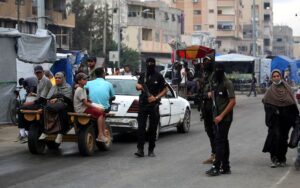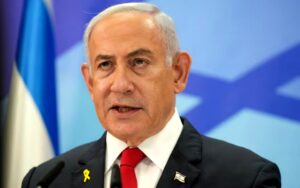Financial Times: Hamas reasserts control over Gaza Strip pursues suspected collaborators with Israel

The Financial Times reported that Hamas began reasserting control over the Gaza Strip just hours after announcing a ceasefire agreement with Israel.
The Financial Times added, citing eyewitnesses, that the movement set up checkpoints, clashed with local opponents, and arrested Palestinians suspected of collaborating with Israel.
Based on testimonies from local residents, images circulating on social media, and security updates from the United Nations, the newspaper explained that Hamas moved quickly across the Gaza Strip to restore order on the ground and settle scores with armed factions and groups that received support and weapons from Israel during the recent war.
The Financial Times noted that Hamas’s sudden return to the field following extensive Israeli strikes surprised Gaza residents, at a time when international parties are preparing for new negotiations on the peace plan proposed by US President Donald Trump.
The Financial Times pointed out that the ceasefire stipulates a prisoner exchange between the two sides by next Monday, with an international force subsequently assuming the task of maintaining security within the Gaza Strip after Hamas’s disarmament.
However, during the first hours of the truce, Hamas demonstrated its strength, asserting that it would take charge of enhancing security and stability and protecting citizens’ rights.
In northern Gaza, Hamas engaged in armed clashes with two Palestinian tribes that had received support and weapons from the Israeli army, according to a Western diplomat briefed on the details of the confrontation.
In Gaza City, masked gunmen set up checkpoints to search cars for weapons, while in Khan Yunis, talks were held between Hamas and a local militia to hand over their weapons to avoid further bloodshed, according to a Hamas-affiliated Telegram channel.
In other parts of the Gaza Strip, sporadic clashes broke out between small militias that emerged during the chaos of the war, some of which had received weapons from Israel.
Hamas demanded that all its opponents surrender their weapons within 48 hours and hand over their leaders to the movement.
However, the Popular Forces faction, Hamas’s largest opponent and led by Yasser Abu Shabab, which controls large parts of Rafah and is linked to Israeli training and armament, refused to comply.





